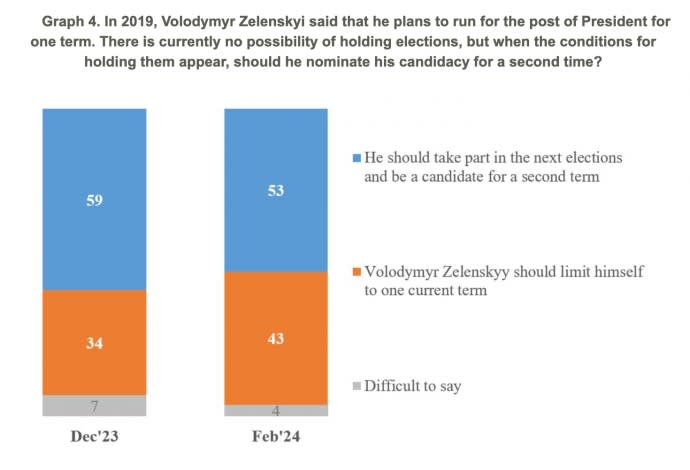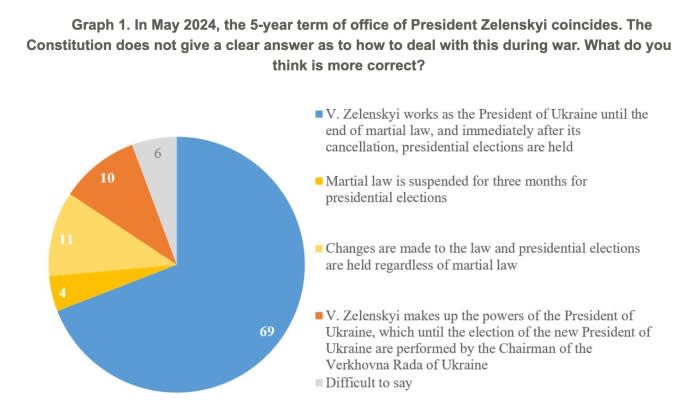Number of Ukrainians favour one presidential term for Zelenskyy increases

- Oops!Something went wrong.Please try again later.
The number of Ukrainians who believe that Volodymyr Zelenskyy should be limited to one presidential term has increased by seven percentage points compared to December and in February, it stands at 43%.
Source: results of a survey conducted by the Kyiv International Institute of Sociology (KIIS) on 5-10 February
Quote from KIIS: "From 34% in December 2023 to 43% in February 2024, the share of those who believe that V. Zelenskyy should limit himself to one current term increased."
Details: Meanwhile, the vast majority of Ukrainians (69%) believe that Zelenskyy should be a president until the end of martial law.

Infographic: KIIS
A total of 15% are convinced that elections should be held (including 4% of those who advocate for the suspension of martial law and 11% who want changes to the relevant laws and holding elections during martial law).
Ten percent of those surveyed support the option, which proposes that in May 2024 Zelenskyy resigns and Verkhovna Rada chairman assumes his duties until the election of a new president.

Infographic: KIIS
However, regardless of views on the need for elections, over half of Ukrainians (53%) believe that Zelenskyy should participate in the next elections. KIIS stated that there were 59% of such respondents in December 2023.
The study was conducted from 5 February to 10. 1,202 respondents living in all regions of Ukraine (except the Autonomous Republic of Crimea) were interviewed by telephone with the use of a random sample of mobile numbers. The survey did not include residents of territories that were temporarily not controlled by the Ukrainian authority and the survey was not conducted with citizens who went abroad.
Formally, under normal circumstances, the margin error of such a sample (with a probability of 0.95 and taking into account the design effect of 1.1) did not exceed 3.2% for indicators close to 50%; 2.7% for indicators close to 25%; 2.1% for indicators close to 10%; and 1.4% for indicators close to 5%.
A certain systematic deviation is added to the specified formal error in war conditions. But sociologists believe that the results obtained are highly representative, allowing us to analyse the public mood of the population reliably.
Support UP or become our patron!
